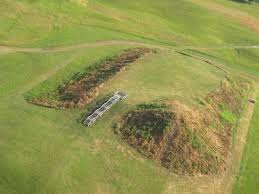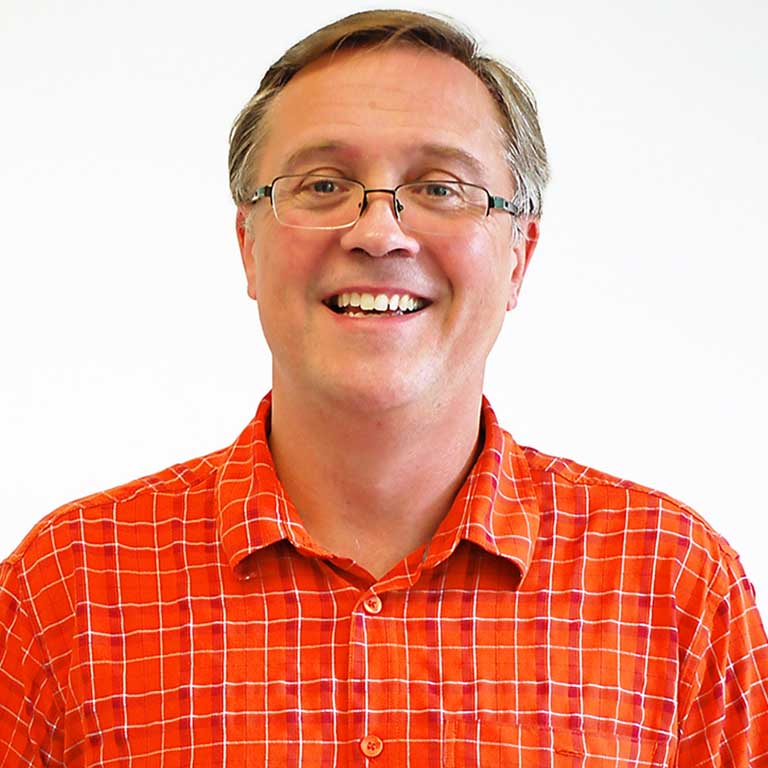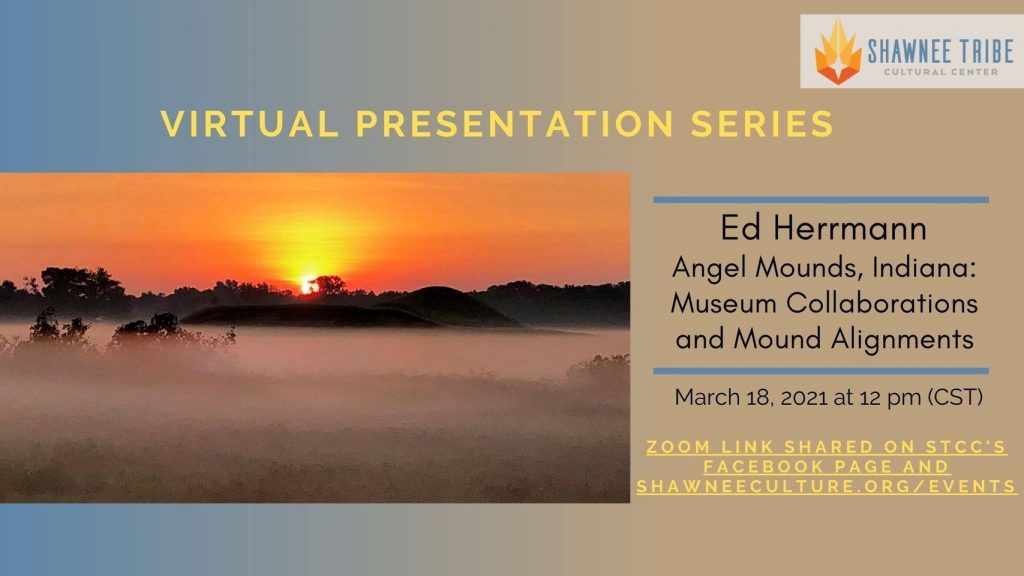
(UNDATED) – The Indiana Division of Historic Preservation & Archaeology is holding a virtual presentation hosted by the Shawnee Tribe Cultural Center “Angel Mounds, Indiana: Museum Collaborations and Mound Alignments”

The program will be presented by Dr. Ed Herrmann, Executive Director of the Indiana University Museum of Archaeology and Anthropology, and a faculty member in the Earth and Atmospheric Sciences Department.

Dr. Herrmann is a geoarchaeologist who uses methods and theories developed in geosciences to study archaeological questions. His training and research is multidisciplinary in nature and straddles the fields of anthropology, archaeology, history, geology, and earth science.
He is working on mound construction and/or site chronologies at sites such as the Great Serpent Mound in Ohio, the Lawrenz Gun Club site in Illinois, and Angel Mounds in Indiana. His fieldwork includes teaching field schools, studying prehistoric landscape use, geomorphology, lithic tools, and archaeological site predictive modeling.
The free virtual program will be on March 18, 2021, at 1 p.m. ET, Noon CT.
To learn more click here.
Although his degree is in anthropology, the archaeological research questions Dr. Herrmann addresses focus on how earth processes affect archaeological sites. Such work provides data relevant to understanding the chronology and environmental contexts specific to archaeological site occupational histories. Ed has been involved in archaeological projects in Illinois, Indiana, Montana, Ohio, Wisconsin, and Wyoming, as well as in Germany and Tanzania.
While in Germany, Dr. Herrmann worked for the Römisch-Germanisches Museum in Cologne, where he conducted excavations, cataloged artifacts, trained new hires, and gave museum tours. He had the opportunity for hands-on experience with Old World lithics, Roman-era artifacts and fieldwork, and cave excavations. These experiences have helped him understand that museum research includes a broad range of scientific disciplines and a wide variety of collections-based questions.
While a student working at the Glenn A. Black Laboratory of Archaeology, Dr. Herrmann developed an interest in experimental archaeology and studied stone tool technology and the identification of Midwestern tool types. He organized the Lithic Raw Material and typological comparative collections and created a website to share information related to the over 500 raw material sources and types curated at the facility. He is also an avid flintknapper.
Although much of his research focuses on early North American hunter-gatherers, he has experience in Native American mound construction methods, chronologies, and taphonomy (the study of differential preservation of or within archaeological sites). As the term geoarchaeology implies, Dr. Herrmann researches both the Earth and the people who inhabited it. He works in different time periods and regions and has had experience working at sites in Germany that range in time from the Upper Paleolithic to Roman colonies to medieval villages. At Olduvai Gorge, Tanzania, he studies evolutionary clues left by early human ancestors millions of years ago.
These experiences gave Dr. Herrmann the opportunity to work with a variety of people including Indigenous communities from a wide range of cultures. At Olduvai Gorge, his research team lived and worked with Maasai and Chagga tribal communities. Their perspectives and local landscape knowledge are invaluable assets to the research conducted during the summer weeks on the Serengeti.
In North America, Dr. Herrmann spent two summers conducting research and organizing a landscape-based field school through Little Big Horn College that focused on locating and excavating buffalo jump and trap sites on the Crow reservation. The grant he helped obtain for this field school facilitated teaching ten Crow students the skills necessary to become tribal archaeological technicians, and provided the students with funding for six college credits.
He is currently the Chair of the Geoarchaeology Interest Group of the Society of American Archaeology, and a member of numerous archaeological, museum, and Earth sciences associations.
He is currently working on a long-term project focused on deciphering the post-glacial geomorphology of Indiana’s White River Valley in order to understand how terrace and floodplain evolution has affected the visibility of late Pleistocene and early Holocene archaeological sites. The goal is to incorporate this knowledge into models that can predict where these archaeological sites might be found in buried and therefore preserved fluvial contexts.




